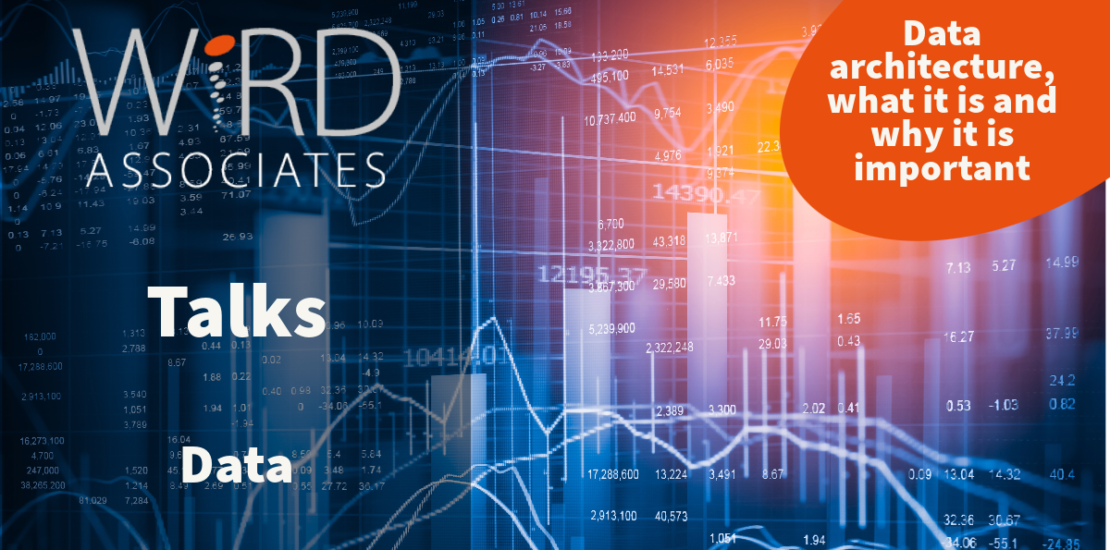- 2023-09-06
- Posted by: Adrian Williams
- Categories: Data, IT Architecture

Understanding data architecture
What is data architecture?
At WiRD Associates we see Data architecture as the blueprint for how an organisation collects, stores, manages, and uses its data. In our experience it has become an increasingly critical component of any organisation’s IT infrastructure because it ensures that data is accessible, reliable, and secure.
At WiRD we have seen how a well-designed and well managed data architecture can help organisations to:
- Improve decision-making: By providing access to accurate and timely data, data architecture can help organisations to make better decisions about their operations, products, and services.
- Increase efficiency: By streamlining data management processes, data architecture can help organisations to save time and money.
- Reduce risk: By ensuring that data is secure and compliant with regulations, data architecture can help organisations to mitigate risk.
- Drive innovation: By providing a foundation for data-driven insights, data architecture can help organisations to innovate and stay ahead of the competition.
Why is data architecture so important in today’s business environment?
At WiRD we have seen the growing importance of a well-designed and well managed data architecture in today’s digital age. We witness time and again how organisations that fail to invest in a good data incur a growing competitive disadvantage. From WiRD’s point of view these are some of the reasons why modern data architecture is important:
- The volume and variety of data is increasing exponentially.
- The need to make data-driven decisions is becoming more urgent.
- Many organisations are becoming data driven organisations in order to maintain and enhance their competitiveness.
- The cost of storing and managing data is decreasing steadily but the exponentially increasing volumes of data are demanding more sophisticated and therefore costly data management solutions.
- The cloud is becoming the preferred platform for data storage and processing.
- New technologies, such as artificial intelligence (AI) and machine learning (ML), are making it possible to extract more value from data.
In our view a modern data architecture must be able to handle the increasing volume and variety of data, as well as the need to make data-driven decisions in real time. It must also be scalable and agile enough to adapt to new technologies and business requirements.
Here are some of the benefits we have witnessed from a modern data architecture:
- Increased agility and flexibility.
- Improved data quality and accuracy.
- Reduced costs.
- Increased security and compliance.
- Improved decision-making.
- Accelerated innovation.
Thes are a few of the things WiRD helps our client to do in order to improve their organisation’s data architecture:
- Assess their current data architecture and identify any gaps or weaknesses.
- Develop a plan to modernise their data architecture.
- Implement the plan and monitor its effectiveness.
- Continuously improve their data architecture as their needs change.
We have witnessed how by investing in a modern data architecture, our clients have helped their organisation to improve its decision-making, increase its agility, and reduce its costs.
What is your experience in this regard? How has your organisation approached data architecture and what have been the pros and cons that approach? Please share your experiences with WiRD and each other by commenting or interacting on LinkedIn
